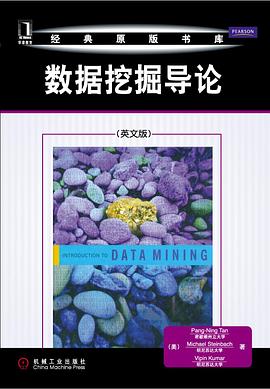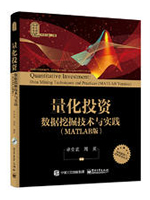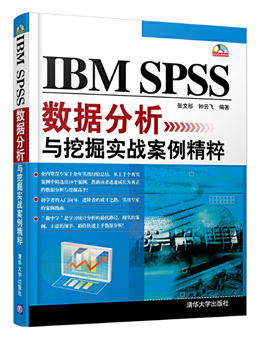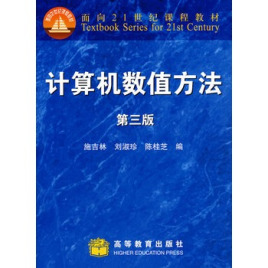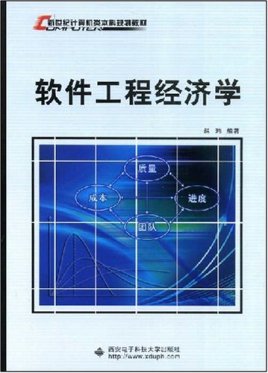本书全面介绍了数据挖掘的理论和方法,着重介绍如何用数据挖掘知识解决各种实际问题,涉及学科领域众多,适用面广。
书中涵盖5个主题:数据、分类、关联分析、聚类和异常检测。除异常检测外,每个主题都包含两章:前面一章讲述基本概念、代表性算法和评估技术,后面一章较深入地讨论高级概念和算法。目的是使读者在透彻地理解数据挖掘基础的同时,还能了解更多重要的高级主题。
本书特色
·包含大量的图表、综合示例和丰富的习题。
·不需要数据库背景,只需要很少的统计学或数学背景知识。
·网上配套教辅资源丰富,包括ppt、习题解答、数据集等。
目录
- preface v
- 1 introduction 1
- 1.1 what is data mining 2
- 1.2 motivating challenges 4
- 1.3 the origins of data mining 6
- 1.4 data mining tasks 7
- 1.5 scope and organization of the book 11
- 1.6 bibliographic notes 13
- 1.7 exercises 16
- 2 data 19
- 2.1 types of data 22
- 2.1.1 attributes and measurement 23
- 2.1.2 types of data sets 29
- 2.2 data quality 36
- 2.2.1 measurement and data collection issues 37
- 2.2.2 issues related to applications 43
- 2.3 data preprocessing 44
- 2.3.1 aggregation 45
- 2.3.2 sampling 47
- 2.3.3 dimensionality reduction 50
- .2.3.4 feature subset selection 52
- 2.3.5 feature creation 55
- 2.3.6 discretization and binarization 57
- 2.3.7 variable transformation 63
- 2.4 measures of similarity and dissimilarity 65
- 2.4.1 basics 66
- 2.4.2 similarity and dissimilarity between simple attributes67
- 2.4.3 dissimilarities between data objects 69
- 2.4.4 similarities between data objects 72
- 2.4.5 examples of proximity measures 73
- 2.4.6 issues in proximity calculation 80
- 2.4.7 selecting the right proximity measure 83
- 2.5 bibliographic notes 84
- 2.6 exercises 88
- 3 exploring data 97
- 3.1 the iris data set 98
- 3.2 summary statistics 98
- 3.2.1 frequencies and the mode 99
- 3.2.2 percentiles 100
- 3.2.3 measures of location: mean and median 101
- 3.2.4 measures of spread: range and variance 102
- 3.2.5 multivariate summary statistics 104
- 3.2.6 other ways to summarize the data 105
- 3.3 visualization 105
- 3.3.1 motivations for visualization 105
- 3.3.2 general concepts 106
- 3.3.3 techniques 110
- 3.3.4 visualizing higher-dimensional data 124
- 3.3.5 do’s and don’ts 130
- 3.4 olap and multidimensional data analysis 131
- 3.4.1 representing iris data as a multidimensional array 131
- 3.4.2 multidimensional data: the general case 133
- 3.4.3 analyzing multidimensional data 135
- 3.4.4 final comments on multidimensional data analysis 139
- 3.5 bibliographic notes 139
- 3.6 exercises 141
- 4 classification:
- basic concepts, decision trees, and model evaluation 145
- 4.1 preliminaries 146
- 4.2 general approach to solving a classification problem 148
- 4.3 decision tree induction 150
- 4.3.1 how a decision tree works 150
- 4.3.2 how to build a decision tree 151
- 4.3.3 methods for expressing attribute test conditions 155
- 4.3.4 measures for selecting the best split 158
- 4.3.5 algorithm for decision tree induction 164
- 4.3.6 an example: web robot detection 166
- contents xi
- 4.3.7 characteristics of decision tree induction 168
- 4.4 model overfitting 172
- 4.4.1 overfitting due to presence of noise 175
- 4.4.2 overfitting due to lack of representative samples 177
- 4.4.3 overfitting and the multiple comparison procedure 178
- 4.4.4 estimation of generalization errors 179
- 4.4.5 handling overfitting in decision tree induction 184
- 4.5 evaluating the performance of a classifier 186
- 4.5.1 holdout method 186
- 4.5.2 random subsampling 187
- 4.5.3 cross-validation 187
- 4.5.4 bootstrap 188
- 4.6 methods for comparing classifiers 188
- 4.6.1 estimating a confidence interval for accuracy 189
- 4.6.2 comparing the performance of two models 191
- 4.6.3 comparing the performance of two classifiers 192
- 4.7 bibliographic notes 193
- 4.8 exercises 198
- 5 classification: alternative techniques 207
- 5.1 rule-based classifier 207
- 5.1.1 how a rule-based classifier works 209
- 5.1.2 rule-ordering schemes 211
- 5.1.3 how to build a rule-based classifier 212
- 5.1.4 direct methods for rule extraction 213
- 5.1.5 indirect methods for rule extraction 221
- 5.1.6 characteristics of rule-based classifiers 223
- 5.2 nearest-neighbor classifiers 223
- 5.2.1 algorithm 225
- 5.2.2 characteristics of nearest-neighbor classifiers 226
- 5.3 bayesian classifiers 227
- 5.3.1 bayes theorem 228
- 5.3.2 using the bayes theorem for classification 229
- 5.3.3 na¨ve bayes classifier 231
- 5.3.4 bayes error rate 238
- 5.3.5 bayesian belief networks 240
- 5.4 artificial neural network (ann) 246
- 5.4.1 perceptron 247
- 5.4.2 multilayer artificial neural network 251
- 5.4.3 characteristics of ann 255
- xii contents
- 5.5 support vector machine (svm) 256
- 5.5.1 maximum margin hyperplanes 256
- 5.5.2 linear svm: separable case 259
- 5.5.3 linear svm: nonseparable case 266
- 5.5.4 nonlinear svm 270
- 5.5.5 characteristics of svm 276
- 5.6 ensemble methods 276
- 5.6.1 rationale for ensemble method 277
- 5.6.2 methods for constructing an ensemble classifier 278
- 5.6.3 bias-variance decomposition 281
- 5.6.4 bagging 283
- 5.6.5 boosting 285
- 5.6.6 random forests 290
- 5.6.7 empirical comparison among ensemble methods 294
- 5.7 class imbalance problem 294
- 5.7.1 alternative metrics 295
- 5.7.2 the receiver operating characteristic curve 298
- 5.7.3 cost-sensitive learning 302
- 5.7.4 sampling-based approaches 305
- 5.8 multiclass problem 306
- 5.9 bibliographic notes 309
- 5.10 exercises 315
- 6 association analysis: basic concepts and algorithms 327
- 6.1 problem definition 328
- 6.2 frequent itemset generation 332
- 6.2.1 the apriori principle 333
- 6.2.2 frequent itemset generation in the apriori algorithm335
- 6.2.3 candidate generation and pruning 338
- 6.2.4 support counting 342
- 6.2.5 computational complexity 345
- 6.3 rule generation 349
- 6.3.1 confidence-based pruning 350
- 6.3.2 rule generation in apriori algorithm 350
- 6.3.3 an example: congressional voting records 352
- 6.4 compact representation of frequent itemsets 353
- 6.4.1 maximal frequent itemsets 354
- 6.4.2 closed frequent itemsets 355
- 6.5 alternative methods for generating frequent itemsets 359
- 6.6 fp-growth algorithm 363
- contents xiii
- 6.6.1 fp-tree representation 363
- 6.6.2 frequent itemset generation in fp-growth algorithm366
- 6.7 evaluation of association patterns 370
- 6.7.1 objective measures of interestingness 371
- 6.7.2 measures beyond pairs of binary variables 382
- 6.7.3 simpson’s paradox 384
- 6.8 effect of skewed support distribution 386
- 6.9 bibliographic notes 390
- 6.10 exercises 404
- 7 association analysis: advanced concepts 415
- 7.1 handling categorical attributes 415
- 7.2 handling continuous attributes 418
- 7.2.1 discretization-based methods 418
- 7.2.2 statistics-based methods 422
- 7.2.3 non-discretization methods 424
- 7.3 handling a concept hierarchy 426
- 7.4 sequential patterns 429
- 7.4.1 problem formulation 429
- 7.4.2 sequential pattern discovery 431
- 7.4.3 timing constraints 436
- 7.4.4 alternative counting schemes 439
- 7.5 subgraph patterns 442
- 7.5.1 graphs and subgraphs 443
- 7.5.2 frequent subgraph mining 444
- 7.5.3 apriori -like method 447
- 7.5.4 candidate generation 448
- 7.5.5 candidate pruning 453
- 7.5.6 support counting 457
- 7.6 infrequent patterns 457
- 7.6.1 negative patterns 458
- 7.6.2 negatively correlated patterns 458
- 7.6.3 comparisons among infrequent patterns, negative patterns,and negatively correlated patterns 460
- 7.6.4 techniques for mining interesting infrequent patterns 461
- 7.6.5 techniques based on mining negative patterns 463
- 7.6.6 techniques based on support expectation 465
- 7.7 bibliographic notes 469
- 7.8 exercises 473
- xiv contents
- 8 cluster analysis: basic concepts and algorithms 487
- 8.1 overview 490
- 8.1.1 what is cluster analysis 490
- 8.1.2 different types of clusterings 491
- 8.1.3 different types of clusters 493
- 8.2 k-means 496
- 8.2.1 the basic k-means algorithm 497
- 8.2.2 k-means: additional issues 506
- 8.2.3 bisecting k-means 508
- 8.2.4 k-means and different types of clusters 510
- 8.2.5 strengths and weaknesses 510
- 8.2.6 k-means as an optimization problem 513
- 8.3 agglomerative hierarchical clustering 515
- 8.3.1 basic agglomerative hierarchical clustering algorithm 516
- 8.3.2 specific techniques 518
- 8.3.3 the lance-williams formula for cluster proximity 524
- 8.3.4 key issues in hierarchical clustering 524
- 8.3.5 strengths and weaknesses 526
- 8.4 dbscan 526
- 8.4.1 traditional density: center-based approach 527
- 8.4.2 the dbscan algorithm 528
- 8.4.3 strengths and weaknesses 530
- 8.5 cluster evaluation 532
- 8.5.1 overview 533
- 8.5.2 unsupervised cluster evaluation using cohesion and
- separation 536
- 8.5.3 unsupervised cluster evaluation using the proximity
- matrix 542
- 8.5.4 unsupervised evaluation of hierarchical clustering 544
- 8.5.5 determining the correct number of clusters 546
- 8.5.6 clustering tendency 547
- 8.5.7 supervised measures of cluster validity 548
- 8.5.8 assessing the significance of cluster validity measures553
- 8.6 bibliographic notes 555
- 8.7 exercises 559
- 9 cluster analysis: additional issues and algorithms 569
- 9.1 characteristics of data, clusters, and clustering algorithms570
- 9.1.1 example: comparing k-means and dbscan 570
- 9.1.2 data characteristics 571
- contents xv
- 9.1.3 cluster characteristics 573
- 9.1.4 general characteristics of clustering algorithms 575
- 9.2 prototype-based clustering 577
- 9.2.1 fuzzy clustering 577
- 9.2.2 clustering using mixture models 583
- 9.2.3 self-organizing maps (som) 594
- 9.3 density-based clustering 600
- 9.3.1 grid-based clustering 601
- 9.3.2 subspace clustering 604
- 9.3.3 denclue: a kernel-based scheme for density-based
- clustering 608
- 9.4 graph-based clustering 612
- 9.4.1 sparsification 613
- 9.4.2 minimum spanning tree (mst) clustering 614
- 9.4.3 opossum: optimal partitioning of sparse similarities
- using metis 616
- 9.4.4 chameleon: hierarchical clustering with dynamic
- modeling 616
- 9.4.5 shared nearest neighbor similarity 622
- 9.4.6 the jarvis-patrick clustering algorithm 625
- 9.4.7 snn density 627
- 9.4.8 snn density-based clustering 629
- 9.5 scalable clustering algorithms 630
- 9.5.1 scalability: general issues and approaches 630
- 9.5.2 birch 633
- 9.5.3 cure 635
- 9.6 which clustering algorithm 639
- 9.7 bibliographic notes 643
- 9.8 exercises 647
- 10 anomaly detection 651
- 10.1 preliminaries 653
- 10.1.1 causes of anomalies 653
- 10.1.2 approaches to anomaly detection 654
- 10.1.3 the use of class labels 655
- 10.1.4 issues 656
- 10.2 statistical approaches 658
- 10.2.1 detecting outliers in a univariate normal distribution 659
- 10.2.2 outliers in a multivariate normal distribution 661
- 10.2.3 a mixture model approach for anomaly detection 662
- xvi contents
- 10.2.4 strengths and weaknesses 665
- 10.3 proximity-based outlier detection 666
- 10.3.1 strengths and weaknesses 666
- 10.4 density-based outlier detection 668
- 10.4.1 detection of outliers using relative density 669
- 10.4.2 strengths and weaknesses 670
- 10.5 clustering-based techniques 671
- 10.5.1 assessing the extent to which an object belongs to a
- cluster 672
- 10.5.2 impact of outliers on the initial clustering 674
- 10.5.3 the number of clusters to use 674
- 10.5.4 strengths and weaknesses 674
- 10.6 bibliographic notes 675
- 10.7 exercises 680
- appendix a linear algebra 685
- a.1 vectors 685
- a.1.1 definition 685
- a.1.2 vector addition and multiplication by a scalar 685
- a.1.3 vector spaces 687
- a.1.4 the dot product, orthogonality, and orthogonal
- projections 688
- a.1.5 vectors and data analysis 690
- a.2 matrices 691
- a.2.1 matrices: definitions 691
- a.2.2 matrices: addition and multiplication by a scalar 692
- a.2.3 matrices: multiplication 693
- a.2.4 linear transformations and inverse matrices 695
- a.2.5 eigenvalue and singular value decomposition 697
- a.2.6 matrices and data analysis 699
- a.3 bibliographic notes 700
- appendix b dimensionality reduction 701
- b.1 pca and svd 701
- b.1.1 principal components analysis (pca) 701
- b.1.2 svd 706
- b.2 other dimensionality reduction techniques 708
- b.2.1 factor analysis 708
- b.2.2 locally linear embedding (lle) 710
- b.2.3 multidimensional scaling, fastmap, and isomap 712
- contents xvii
- b.2.4 common issues 715
- b.3 bibliographic notes 716
- appendix c probability and statistics 719
- c.1 probability 719
- c.1.1 expected values 722
- c.2 statistics 723
- c.2.1 point estimation 724
- c.2.2 central limit theorem 724
- c.2.3 interval estimation 725
- c.3 hypothesis testing 726
- appendix d regression 729
- d.1 preliminaries 729
- d.2 simple linear regression 730
- d.2.1 least square method 731
- d.2.2 analyzing regression errors 733
- d.2.3 analyzing goodness of fit 735
- d.3 multivariate linear regression 736
- d.4 alternative least-square regression methods 737
- appendix e optimization 739
- e.1 unconstrained optimization 739
- e.1.1 numerical methods 742
- e.2 constrained optimization 746
- e.2.1 equality constraints 746
- e.2.2 inequality constraints 747
- author index 750
- subject index 758
- copyright permissions 769
- xviii contents

